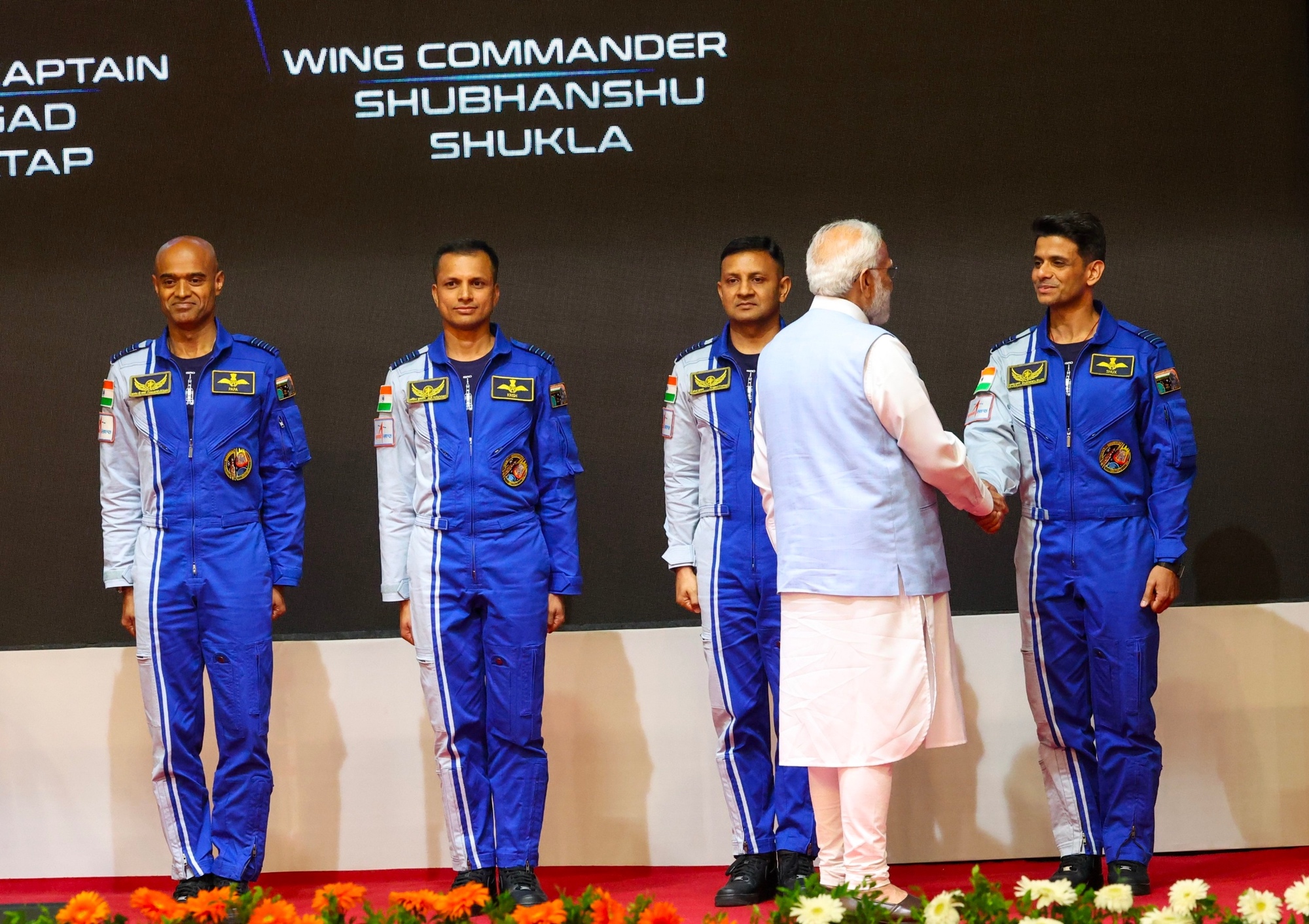LOS ANGELES — NASA and the Indian space agency ISRO remain in discussions about flying an Indian astronaut to the International Space Station after America’s ambassador to India said such a mission was still planned for this year.
Speaking at an event May 22, Eric Garcetti, U.S. ambassador to India, appeared to confirm plans described in a joint statement of the U.S. and Indian governments after a June 2023 meeting in Washington between President Joe Biden and Indian Prime Minister Narendra Modi. That statement said Indian astronauts would train in the U.S. with the goal “of mounting a joint effort to the International Space Station in 2024.”
“We are going to put an Indian astronaut into the International Space Station this year,” Garcetti said, as reported by the Press Trust of India. “We promised when PM Modi came that by the end of this year, we will do this and our mission is still on track to be able to go in space this year.”
Neither NASA nor ISRO have provided formal updates on that effort since the joint statement. Modi announced India’s first group of four astronauts in February, with the expectation that three of them will fly on the first crewed flight of India’s Gaganyaan program no earlier than 2025 and one of them on a mission to the ISS, but ISRO did not announce specific crew assignments.
“At this time, the details regarding the potential space station flight by an ISRO astronaut are being finalized. Once that process is complete, NASA will determine the mission timelines and training modules required to fly to the International Space Station,” NASA spokesperson Julian Coltre told SpaceNews May 24 in response to questions about Garcetti’s comments
The joint statement from last June stated that NASA would provide “advanced training” to Indian astronauts at the Johnson Space Center and that the agencies would develop “a strategic framework for human spaceflight cooperation by the end of 2023.” NASA did not answer questions about whether any Indian astronauts have started training at JSC or if that strategic framework had been completed.
The most likely flight opportunity for an Indian astronaut would be on a private astronaut mission, which would go to the station for up to two weeks. The next such mission is Axiom Space’s Ax-4 mission, slated for late this year, but the company has not announced the crew for that mission. If an Indian astronaut does fly on a private astronaut mission, it is unclear what NASA’s role would be beyond giving approvals required for any such flight to the ISS.
Garcetti’s came just before he met with S. Somanath, head of ISRO, while also speaking at the U.S.-India Commercial Space Cooperation Conference in Bengaluru. A statement from the U.S. embassy did not go into details about his conference speech or meeting with Somanath.
ISRO, in a statement, said Garcetti and Somanath discussed several cooperative ventures, including a potential follow-up to the NASA-ISRO Synthetic Aperture Radar (NISAR) spacecraft scheduled to launch later this year. ISRO said that Garcetti also proposed a “Quad” spacecraft that would involve the Quad countries of Australia, India, Japan and the United States, but did not disclose what that satellite would do.
Somanath, the ISRO statement said, “emphasized building and standardizing docking interfaces across human space programs to enable the utilization of space platforms by other countries,” but did not otherwise discuss human spaceflight cooperation.
Related
Read the original article here



